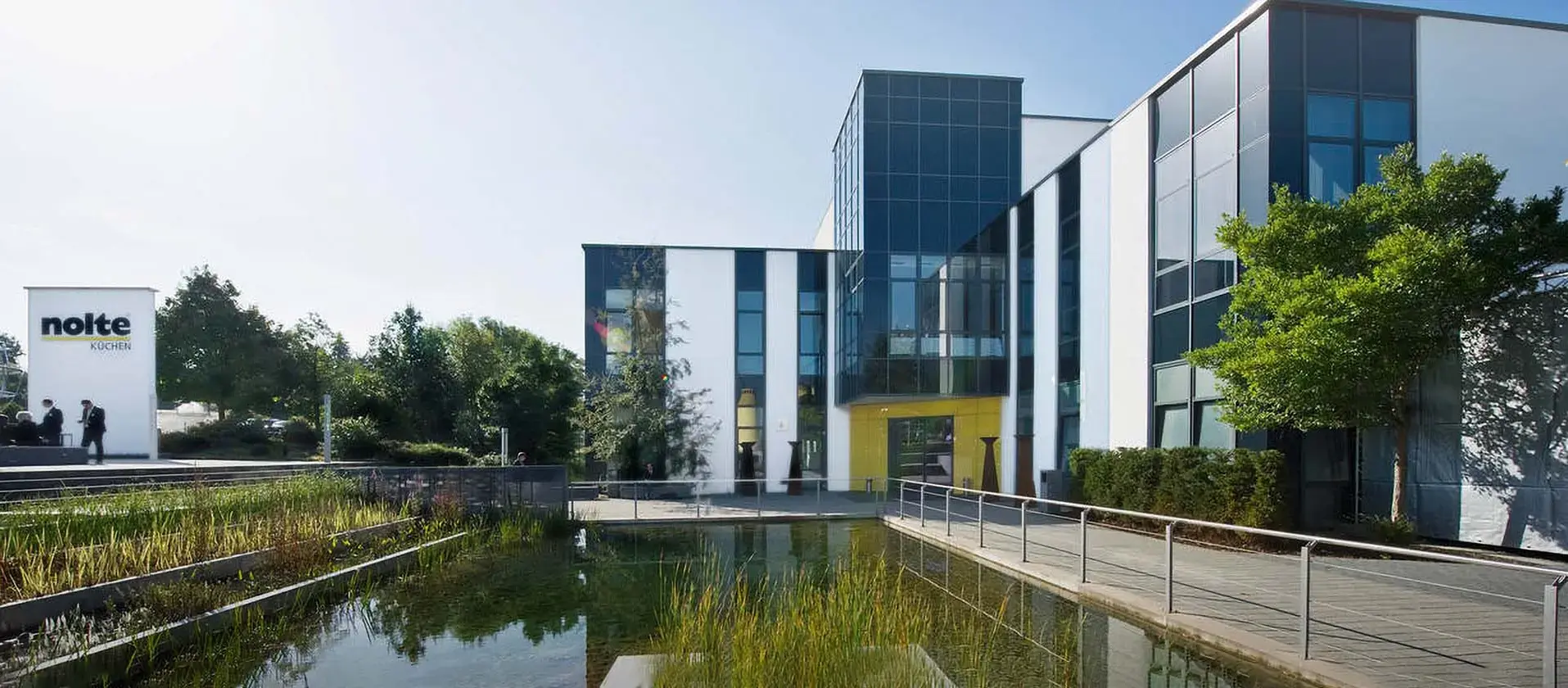- Automatic connection to high-bay warehouse
- Faster storage and removal of goods

Smooth Material Flow Thanks to RFID - Nolte Küchen Custom Kitchens
Case study
Project goals
Challenge
- Small sorting station with high administrative costs
Solution
- Fully automatic identification of goods
- Robust and fast read/write devices
Benefits
- Fast loading and unloading of lorries
- Virtually maintenance-free System
- Automatic goods issue posting in SAP
- Inventory reduction in picking warehouses
Project summary
Nolte Küchen
Nolte Küchen is the second largest kitchen brand in Germany. A focus on a consistent corporate philosophy has made Nolte Küchen a high-performing, innovative company since its foundation in 1958. The company with 1.100 employees is synonymous with top-quality kitchens that are designed and manufactured in Germany. Approximately 700 tailor-made kitchens are manufactured every day.
Nolte Küchen stands for innovation
It’s the company’s goal every year to raise standards further through practical innovations. The tailor-made kitchens are created in a production area covering in total 85.000 m². Enormous quantities of materials are moved between the two production sites at Löhne and Melle in Germany. In order to optimise these material movements, Nolte Küchen GmbH & Co. KG decided to automate its processes in 2005. The aim was to automatically connect the machine lines to the high-bay warehouse, and to automatically load the lorries from the warehouse.
The decision to use RFID transponders was made because, unlike barcodes, they are robust, sturdy and can be hidden in the load carriers. Moreover, they are well suited to storage and retrieval of stream of goods. Other drawbacks of barcodes are that they have to be attached to a visible location and their data reading processes are three times slower. Nolte Küchen opted for readers and transponders from deister electronic.
The RFID experts were honest about the difficulties that might be encountered from the outset and supplied Nolte Küchen with RDL 150 and RDL 90 devices, which were easy to install with the aid of their Easy Trim function. “It worked perfectly right from the start,” says Dirk Rottenberger, Head of Process Control at Nolte Küchen. “We were impressed by the ease with which the devices were put into operation, as well as with deister electronic’s customer service.
That was five years ago now and since then we haven’t had a single failure. The reading rate is 99.99 percent. Goods are correctly booked in and out; our people count on it.” Every day 500 to 600 stacks of cabinet frames and front material are put into and removed from storage. The storage and removal of the pallets takes place fully automatically using roller conveyors that have now replaced forklifts. With 13.56 MHz technology, a consignment of pallets stacked on top of each other can be simultaneously identified and recorded. 13.56 MHz fulfilled all requirements: anti-collision is supported, the antenna is easily adjustable and the transponder has a worldwide unique identification number.
How does the transponder get into the pallet?
Wooden flat pallets are used as load carriers. A hole is drilled in the pallet and a robust 30 mm-diameter epoxy transponder is inserted into it. The hole is closed by a wooden plug. At reporting points, information stored in the MRP system about the stack is married with the transponder. Existing loading stations do not need to be modified or extended as they are optimally used in terms of space and time, thanks to automation. The sorting station in Melle is relatively small. 400 to 500 pallets are stored and removed at the station every day. The fully automated infrastructure has made a considerable reduction in the stock of materials possible. Transponders also facilitate stillage tracking. Moreover, the requirement to clean the transport containers after five uses was implemented without additional administrative effort.
Material tracking across the entire supply chain
Meanwhile, Nolte Küchen’s subcontractors are also using the field-tested RFID technology, allowing them to implement Just In Sequence strategy, which reduces stock levels, and all required parts are available “Just In Time”. Each reader is hooked up via a WLAN adapter. The read data is immediately displayed on the PC screen. Coordination between the individual sites and subcontractors is perfectly controlled by production control software, which also logs and tracks all relevant data. Material flows are thus innovative and cost-efficient.
- Checking the load carriers
- Fast loading and unloading of lorries
- Maintenance-free AutoID
- Material tracking across the entire supply chain
- Inclusion of external suppliers
- Transmission of shipping data via EDI automatic goods issue posting in SAP for sub-contractors
- Inventory reduction in picking warehouses